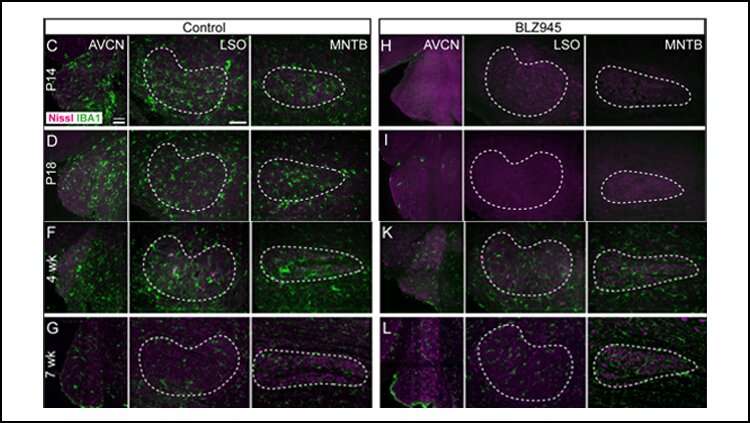Auditory brainstem pathways do not develop properly without microglia

Auditory pathways in the brainstem do not fully mature without microglia clearing away extra cell connections. This crucial function occurs even when pruning by microglia is delayed, according to new research published in eNeuro.
Sensitive hearing requires precise connections between neurons in the auditory brainstem. Early in development, support cells called microglia prune away unnecessary connections and encourage others to expand. Microglia finish their job around two weeks after birth, but the rigidity of this developmental timeframe is unknown.
Milinkeviciute et al. eliminated microglia from the brains of newborn mice using a drug. They stopped the treatment after 10 days, and microglia returned to the brainstem. Initially, the mice with delayed microglia development had more synaptic connections and less sensitive hearing than the controls. The repopulated microglia corrected these issues by the time the mice were seven weeks old.
These results demonstrate the crucial role of microglia in hearing development, even when the timing of their activity is delayed.
More information: Auditory Brainstem Deficits From Early Treatment With a CSF1R Inhibitor Largely Recover With Microglial Repopulation, eNeuro, DOI: 10.1523/ENEURO.0318-20.2021





















